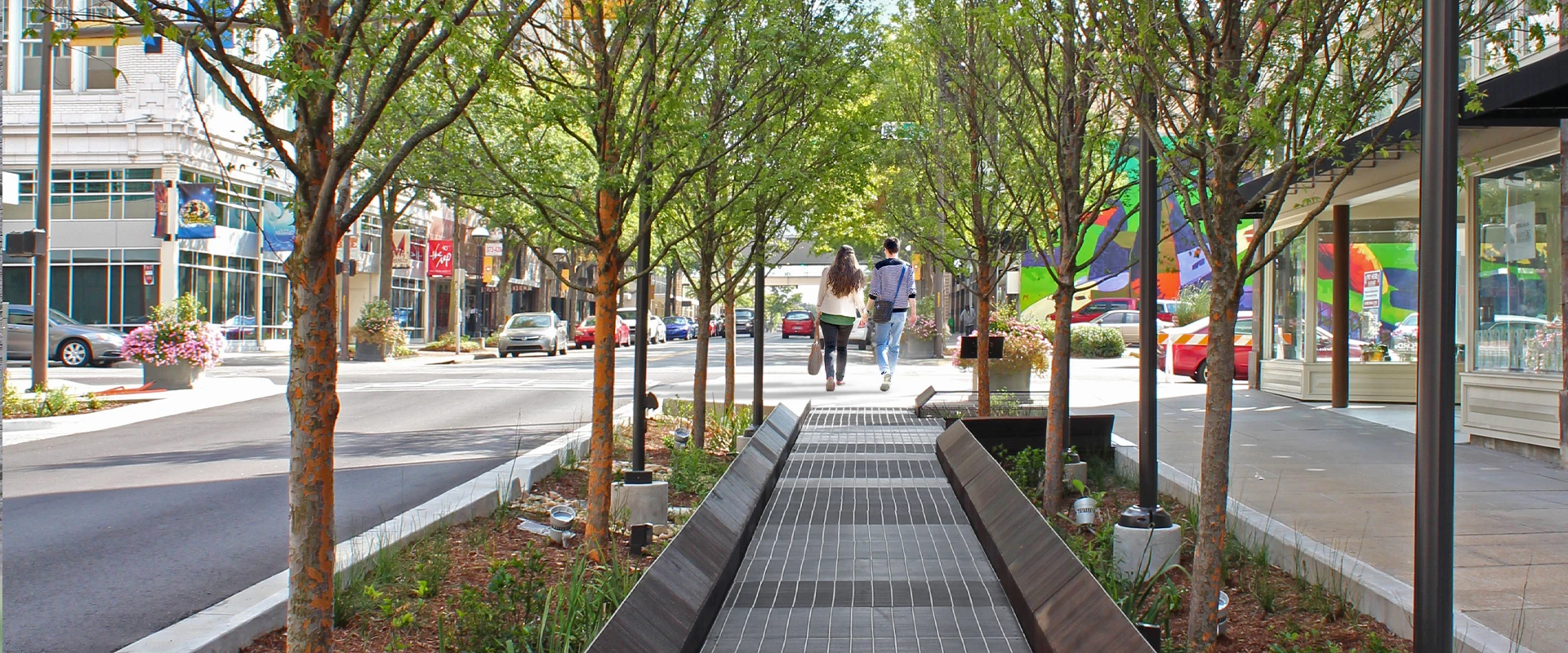
Brad Peterson, P.E., CFM, LEED AP
Senior Vice President Civil - InfrastructureTo many, a triple bottom line approach brings thoughts of business strategies. This term, which means incorporating a social, economic, and environmental aspect, is a common business and accounting practice and is sometimes referred to as the Three Ps (people, planet, and profit). However, it can be a community improvement practice for municipalities as well.
Municipalities aren’t businesses, but they have a similar mission of getting the best return for their investment. After all, most of the money used for municipal projects is coming from a tax-payer funding source of some nature. Depending on the size of the project, it could be an investment bigger than some businesses will ever make.

12th Street Community Jump Start Project - Little Rock, AR
Sustainability is a key to a strategic investment in roadway infrastructure that will benefit the community, the environment, and the economics of the area. Taking a triple bottom line approach to designing infrastructure for the community can accomplish all these things and create a synergy that can not only produce a return on investment immediately but has the potential for a sustained ROI for years to come. This approach to the design of municipal projects has the potential to transform a neighborhood, community, or an entire city.
Crafton Tull has found this to be true in a variety of projects, including the 12th Street Community Jump Start project in Little Rock, the Levy Jump Start project in North Little Rock, and the Main Street Little Rock Water Quality Demonstration in downtown Little Rock. Each of these street improvement projects serves a different community, but each of them offers benefits to the social, economic, and environmental health of the area, and were designed with the Three Ps in mind.

Main Street Water Quality Demonstration - Little Rock, AR
The improvements to each of these areas might seem simple from the outside looking in — improved streets, drainage, pedestrian crossings, better lighting — but looking a little deeper reveals the embedded Three P benefits. What could be implemented as a simple street improvement project becomes something more when the harmony of these three areas is considered and implemented.
Social (People)
A walkable area can make all the difference in the social aspect of a community. A properly designed street and pedestrian accessibility with enhanced safety features, such as lighting, can help to accomplish this goal. Little Rock’s 12th Street and North Little Rock’s Levy communities, as well as Little Rock’s Main Street Corridor all needed improvements to the accessibility of the area and these projects provided these accommodations. But that is only the beginning.
Environmental (Planet)
In each of these designs, low-impact development was utilized, which places an emphasis on environmentally friendly solutions to common infrastructure projects, such as drainage. In the 12th Street Community and Levy improvements, pervious pavement, rain gardens, and other low-impact development help to filter pollutants in stormwater runoff from the streets. In downtown Little Rock, the Main Street Water Quality Demonstration Streetscape focused on showcasing the hydrologic cycle within the urban environment while educating the community about such techniques and their benefits.
These design techniques are not only aesthetically appealing, but they also directly correlate with the restoration of the natural ecosystem within the area. Native plantings and bioswales can reduce the need for some concrete drainage inlets. This approach promotes interaction within the streetscape rather than creating a barrier.
Economic (Profit)
With improved walkability and accessibility comes the potential for economic growth. In all these areas there are small businesses or the potential for new businesses. The economic aspect builds upon the social aspect by improving access to these businesses, which in turn provides a profit for the municipality through tax collection and continued growth. But it doesn’t stop there either.
Following this method allows for the communities to benefit three-fold rather than just improving one aspect of quality of life. Each piece of the triple bottom line approach is interconnected creating a continuous spur for development and further growth in the area.

To institute improvements such as these, the city and the design consultant must solicit buy-in from those in the community, including residents, business owners, and city officials. Once a plan has been put forth, it’s important to designate a champion for the project who will push it forward regardless of potential changes in the economic and political environments. Just as it is important to plan and design with these things in mind, it is equally important to follow through with the project and bring it to fruition as promised.
Ultimately, this approach to city street design can provide a lasting impact on residents, economics, and environment within a community. When considering a lasting return on investment for any municipality, this approach can pave the way for future growth and prosperity.